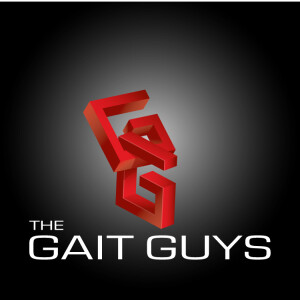
Gait and neurology of movement, including, Tightness? shortness? What’s the difference? It's the Neurology.
 2019-09-08
2019-09-08
We lose muscular Strength as we age.
Changes in supra-spinal activation play a significant role in the age-related changes in strength.
This motor system impairment can be improved by heavy resistance training
https://www.ncbi.nlm.nih.gov/pubmed/25940749
Age (Dordr). 2015 Jun;37(3):9784. doi: 10.1007/s11357-015-9784-y. Epub 2015 May 5.
Strength training-induced responses in older adults: attenuation of descending neural drive with age. Unhjem R1, Lundestad R, Fimland MS, Mosti MP, Wang E.
Osteoarthritis and running
https://journals.lww.com/acsm-csmr/Abstract/2019/06000/Running_Dose_and_Risk_of_Developing.5.aspx
Recent literature adds to a growing body of evidence suggesting that lower-dose running may be protective against the development of osteoarthritis, whereas higher-dose running may increase one's risk of developing lower-extremity osteoarthritis. However, running dose remains challenging to define, leading to difficulty in providing firm recommendations to patients regarding the degree of running which may be safe.
Can even experienced orthopaedic surgeons predict who will benefit from surgery when patients present with degenerative meniscal tears? A survey of 194 orthopaedic surgeons who made 3880 predictions
Non-surgical management is appropriate as first-line therapy in middle-aged patients with symptomatic non-obstructive meniscal tears.
https://bjsm.bmj.com/content/early/2019/08/12/bjsports-2019-100567
Sports Biomech. 2019 Jul 31:1-16. doi: 10.1080/14763141.2019.1624812. [Epub ahead of print]
Running biomechanics before and after Pose® method gait retraining in distance runners.
Wei RX1, Au IPH1, Lau FOY1, Zhang JH1, Chan ZYS1, MacPhail AJC1, Mangubat AL1, Pun G1, Cheung RTH1.
More Episodes
 2016-12-09
2016-12-09
 10
10
 2016-12-09
2016-12-09
 2016-11-21
2016-11-21
 5
5
 2016-10-07
2016-10-07
 4
4
 2016-09-30
2016-09-30
 4
4
 2016-09-21
2016-09-21
 4
4
 2016-04-13
2016-04-13
 5
5
 2015-12-09
2015-12-09
 2015-12-09
2015-12-09
 2
2
Create your
podcast in
minutes
- Full-featured podcast site
- Unlimited storage and bandwidth
- Comprehensive podcast stats
- Distribute to Apple Podcasts, Spotify, and more
- Make money with your podcast
It is Free
- Privacy Policy
- Cookie Policy
- Terms of Use
- Consent Preferences
- Copyright © 2015-2024 Podbean.com




